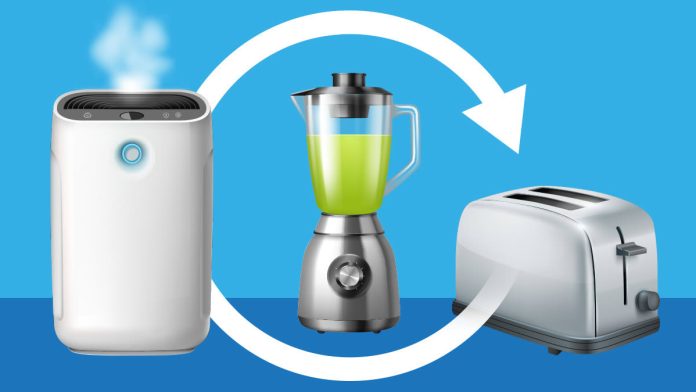Before you assume that your device is defective, read the operating instructions. Sometimes the problem is that you missed the maintenance and simply need to familiarize yourself with the instructions for optimal functioning. For example, it may simply be time to descale your coffee maker or you need to clean your air purifier filter.
If that doesn’t work and the product is still under warranty, call the manufacturer for either a replacement or instructions on how to fix the problem. Many manufacturers warn that attempting to repair a product yourself will void the warranty. But if your warranty has expired, customer service isn’t helpful, and you were going to throw the item away anyway, you might as well unplug the product, pull out your toolbox, and try to revive it. “Instead of making Wordle, try fixing your toaster!” says McGuffin-Cawley, who is also the faculty director of the Larry and Sally Zlotnick Sears study[box] at Case Western. “Approach it as a game or a puzzle to solve.” A few suggestions:
Find the cause of the problem. Is the device really broken? McGuffin-Cawley recalls a colleague who assumed her Keurig was broken when the problem was a faulty pod pack. Search for clues. For example, where is the leak coming from? Where is the sound coming from? If you need help, call customer service. Chances are many others have called before you and the best people can tell you what to do to resolve the issue. They may also put you in touch with partner maintenance and repair shops in your area.
Look for the broken parts. A company website or instruction manual can often direct you to the right place to buy things like electric griddles or a coffee maker carafe. You may also find harder-to-find nuts, bolts, and screws at specialty parts retailers (like Repair Clinic, Parts Select, and Encompass). Certain exterior parts — like a broken handle or a broken dial — could even be 3D printed, says McGuffin-Cawley. (These printers are sometimes available at universities, such as McGuffin-Cawley’s, certain UPS locations, and local manufacturer stores.) Check the plastic used, however. PLA plastic isn’t particularly durable, he says, but ABS plastic (like those used in vintage landline phones) is. To be on the safe side, first contact customer service to see if anyone can help you with your questions and what’s safe.
Do a little detective work. Start by Googling your model number along with the product you come across. You may find many users searching for the same thing and commenting on easy fixes, be it on social media, Reddit or any other forum. There are also websites that are fully or partially dedicated to fixing problems (e.g. iFixit).
Visit a community of fixers. Find a group of repair enthusiasts in your area. For example, find a Repair Cafe near you where volunteers teach repair classes. (You can also find repair tips and user manuals on the website.)
watch a video People learn how to crochet on YouTube. Why not find out how to revive a broken blender? Look for videos with a high number of reviews and channel subscribers. For example, RepairClinic has thousands of videos and hundreds of thousands of subscribers. Watch the video in its entirety at least once so you can make a list of the tools and parts you’ll need, including any safety gear like eye protection and gloves. Then watch it again and see how to fix your device. It may seem expensive to buy new tools at first, but the more familiar you become with repairing your stuff, the more useful these tools become. “It becomes an investment,” says McGuffin-Cawley. “It’s cheaper to fix things if you stick with it for the long term.”
www.consumerreports.org
https://www.consumerreports.org/home-garden/recycling/why-small-appliances-end-up-in-landfills-and-what-to-do-a1160633361/











